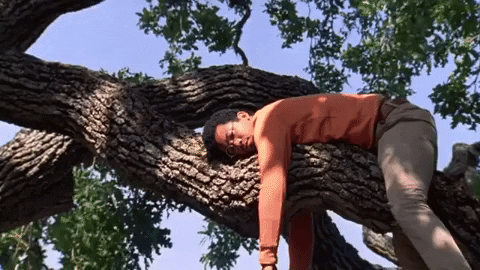House Mascots Ranked by Eco-Friendliness
While Housing Day is still (unfortunately) a semester away, it is never too early to reignite the House pride that all us upperclassmen have and that first-years will eventually be infected with. To help with that, we're blessing you with a ranking of house mascots based on the only criteria that matters: environmental impact. Because let’s be real, every House thinks it’s the best, so we needed to get a little bit objective here.
12. Lowell’s Blue Man
Let’s be real. If Lowell’s Blue Man is a man, no matter how much he tries to lower his carbon footprint, if he’s a citizen of the United States, he will still have a carbon footprint of 16 tons a year. And if he’s anything like the other blue men I know, he will have a blue house with a blue little window and a blue Corvette. I guess everything’s just blue for him.
11. Leverett’s Bunny
They may seem cute and cuddly, but the bunnies we see running around on campus are actually hard at work taking over the mythical land of Australia as we speak, hurting native species. As much as we love our bunnies, we also love koalas and kangaroos and we really need to call out Leverett for this. Our bunnies should be held accountable.
10. Kirkland’s Boar
We would much prefer to walk a puppy than interact with a wild boar in real life. These pigs are running all over the continental United States and uprooting natural vegetation. They can also hurt the birds and amphibians that form an important part of our ecosystem.
9. Dunster’s Moose
You have probably heard of farting cows, but have you ever heard of the belching moose? That’s right, meese aren’t as clean as you would think. Technically, the animals on Dunster’s crest are actually elk, so maybe it isn’t too late for the House to make a change.
8. Eliot’s Mastodon
Granted, the mastodon is extinct and not here at all, but what would happen if they were brought back? Flyby thinks this is a very important question to ponder. However, because we can’t know for sure, Eliot gets some leeway in the rankings. Maybe they would interbreed with the elephants and prevent the species from going extinct? Now that’s a positive environmental impact!
7. Winthrop’s Lion
We’re at the middle of the list. You know what that means. Houses that couldn’t be classified as either extreme too easily! Winthrop’s lions are ethical carnivores, only eating as much as they need. They also live together, which means that if they were to travel together, they would get on one bus instead of all driving different cars. Talk about environmentally friendly!
6. Pfoho’s Polar Bear
Polar bears are extremely useful because they are cute and people LOVE them. From encouraging mere humans to become invested in the fight against climate change to using their ~adaptations~ to conserve heat, polar bears are true powerhouses.
5. Quincy’s Penguin
While potentially less cute than polar bears, penguins are smaller, giving them the advantage of being able to consume less food in order to function. Eating fish is much more environmentally friendly than eating seals. All Harvard students should avoid adding seals to their diet. In addition, Emperor penguins collect in huge colonies to conserve heat. Working together for the good of others!
4. Mather’s Gorilla
Gorillas are mostly just like chill humans. They stick together, eat mostly plant-based diets, and don’t fly around in private jets. That might make them losers (our private jet is currently in Bermuda), but that does make them more environmentally friendly.
3. Cabot’s Fish
What do fish do? They swim around. They chill. Cabot does not specify what kind of fish is its mascot, yet from the shield, it is safe to assume that it is not the invasive lionfish. All in all, the Cabot mascot is rock solid. Unless it’s secretly the lionfish.
2. Adams’ Acorn
Let’s be real, if you’ve made it this far down, you definitely know which House is going to be number 1. And based on that, there’s only so much I can say for Adams. Yes, the acorn by itself is not emitting carbon dioxide, and thus not hurting the environment at all. Yes, it has the potential for greatness. But there’s one house that’s just way ahead of it.
1. Currier’s Tree
Currier wins the top spot as the only House whose mascot is actually protecting us from climate change. By photosynthesizing, the trees convert carbon dioxide into the oxygen we breathe (not sure about specifics, I am not a pre-med), which is pretty dang useful since I enjoy breathing.


